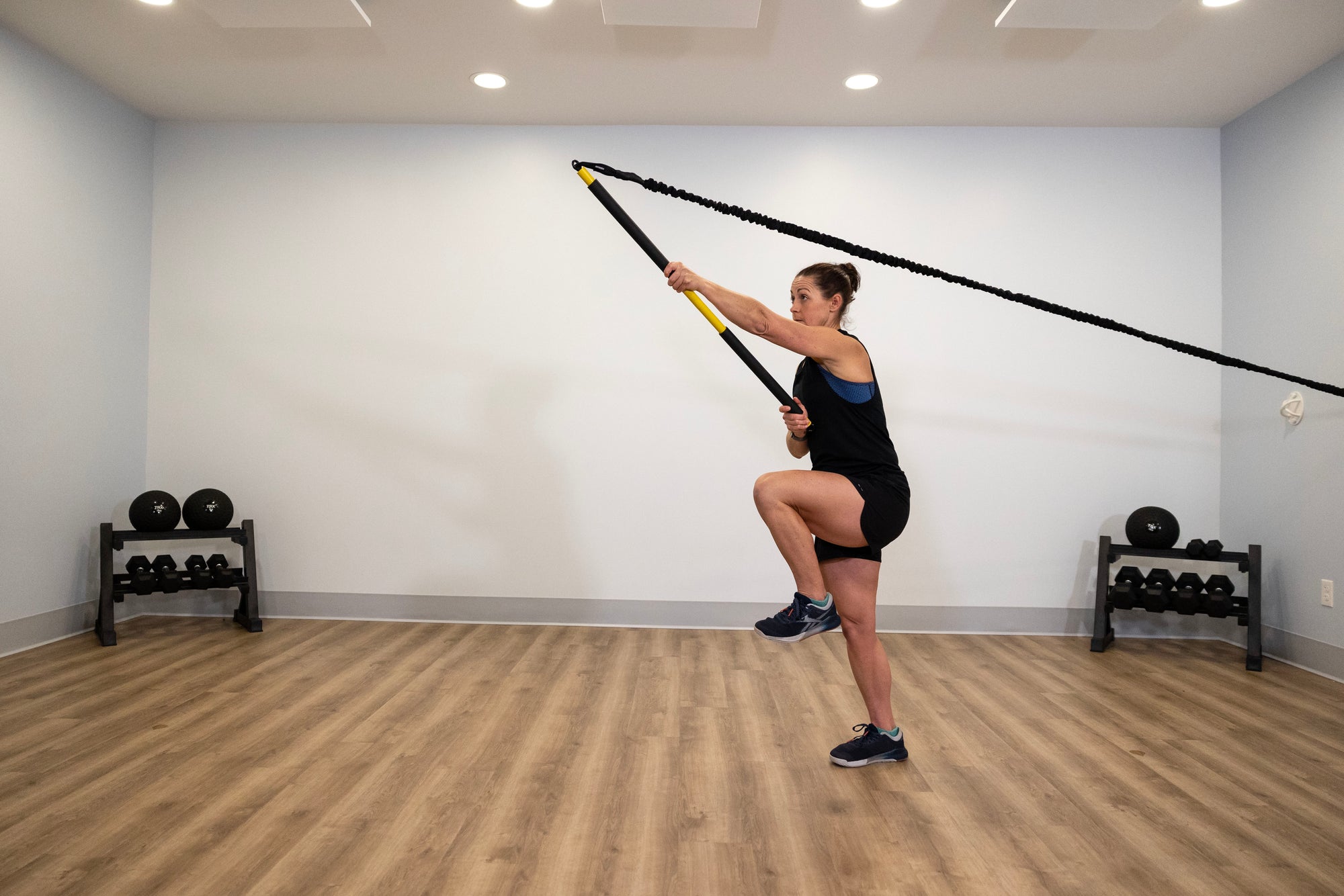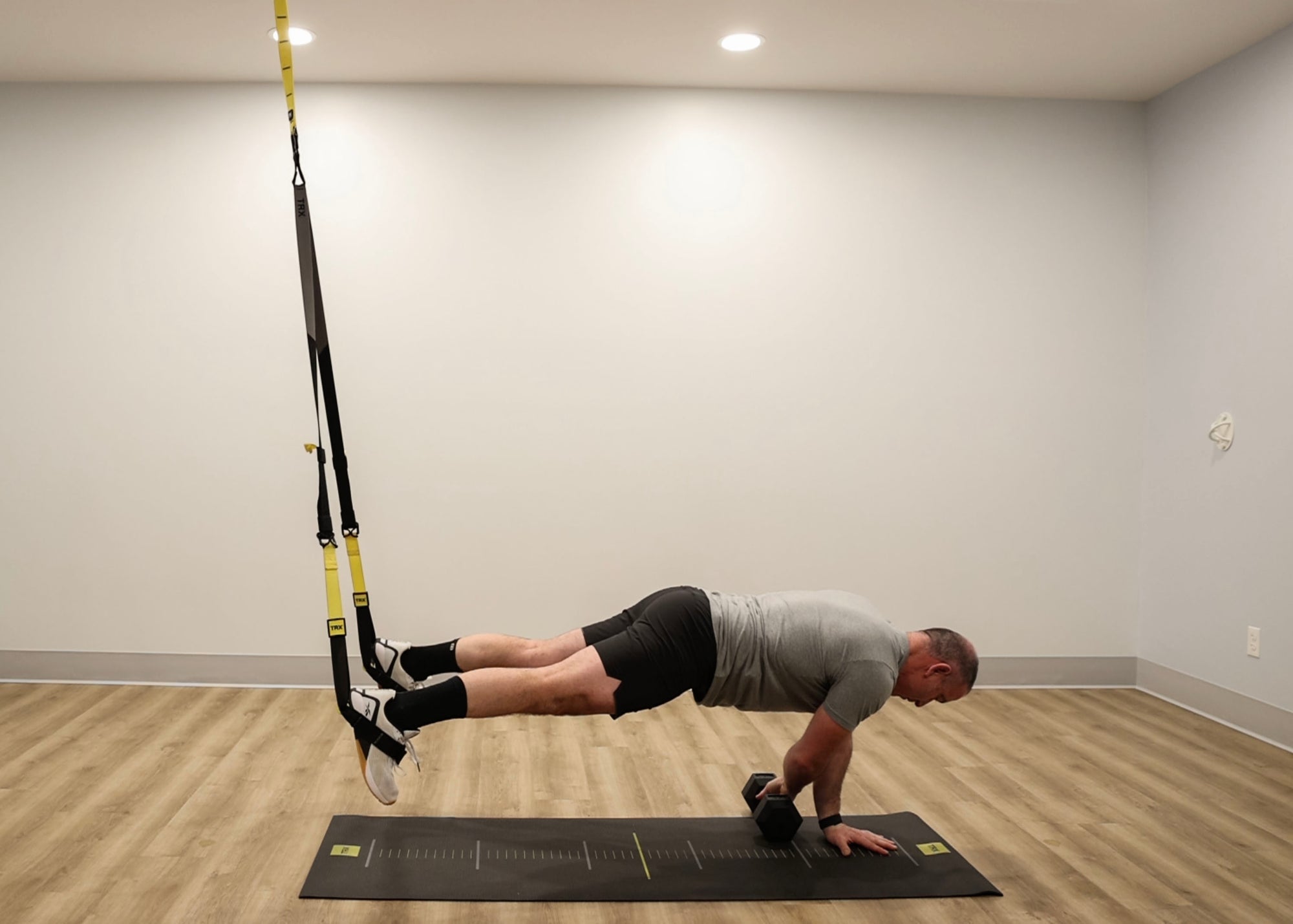No one could have predicted that Tanya, a healthy mother of three, would spend a month in a coma, fighting for her life. She had been a physical therapist. A TRX instructor. A committed runner. Those types of things don’t often happen to people like her.
“I would run every morning, run like five to eight miles, go teach my TRX class, then have personal trainings, then come home and see some high school athletes in the afternoon,” she said. “It was go, go, go.”
Until, one day, it wasn’t.
Tanya was scheduled to go on a trip with her girlfriends when the headache started. At her friends’ urging, she pushed ahead. A little getaway would certainly help, right? Except the pain kept getting worse—to the point that she had to leave early.
Back at her house, her family thought she had the flu. Then she lost control of her legs.
Testing at the hospital revealed that she had viral meningitis.
Stopping Time
Despite treatment, Tanya began slipping in and out of consciousness and fell into a coma.
“I don't remember any of it.” she said. “I was in a coma for a month.”
The problem was that Tanya had developed meningoencephalitis—pressure around her brain—and her head needed a release valve to avoid tragedy. So, on December 16, 2019, the Mass General team drilled a bolt in her head to relieve the pressure. Nine days later, she woke up.
“I opened my eyes on Christmas night for the first time, which, for me, is kind of nice because Christmas is my absolute favorite holiday,” she said.
“I remember laying there and all of these people looking down at me. I heard, ‘Tanya, can you move? Can you move your arm?’ And in my head I was like, ‘Do you know me? Of course I can move! This is what I do.’ And then I realized, ‘Uh-oh. I'm moving, but nothing is moving.’ That was scary—Realizing I couldn't move, and then I couldn't talk.”
Homecoming
Over the following months, the world changed on both micro and macro levels.
Tanya upgraded her hospital wardrobe from pajamas to sweatpants. She made it her mission to ditch one tube at a time. She began physical therapy. (“Towards the end, I kept saying to my physical therapist, ‘Why don't you have TRX?’ I ended up getting her to buy one.”) It was hard, but she was learning how to use her body again.
“When I pulled myself up to stand for the first time and looked down at my legs, I lost it. It was just literally skin hanging off my legs. I had lost all my muscle. It had been months since I had moved. I didn't wanna be helpless anymore.”
Tanya was motivated. She was prepared to continue physical therapy at home. On her last day in the hospital, she even challenged her rehabilitation team to a plank-off.
“It was myself, my physical therapist, my occupational therapist, and an occupational therapy student. We did a plank, and I've never had so much pain. It hurt so much.”
In February 2020, she was discharged from the hospital. In March, everything shut down.
Strong, Again
Tanya’s not one to complain or feel sorry for herself. When the global effort to combat Covid ramped up in March 2020, she was thankful for the additional time with her kids. “They canceled school, at first, for three weeks. I was grateful. I had missed so much time with them. I missed Christmas. My daughter got her license and my son had a birthday.“
But as much as the pandemic gave her the gift of making up for lost time with her kids, it presented obstacles to her recovery. She was too weak to risk meeting with a physical therapist, so she had to lead her own recovery.
As a physical therapist, Tanya knew what to do. She began using her walker and her TRX Suspension Trainer at home to rebuild her range of motion.
“I would cry for the first month I was home. All of my joints ached, especially in my upper body. The muscle and the ligaments—everything was just hanging. There was no muscle to support, so it just hurt so much. I was using my [TRX] strap to squat, to roll out, to try to do a bicep curl, to try to do some triceps. I just kept going, and I would feel a little bit of a difference every day.”
Tanya said having her kids at home while she pushed herself through physical therapy motivated her to keep working.
“There were dark days. I could have easily sat on my couch and just cried,” she admitted. “But I had a child on every floor in my house, and it was just like, ‘No, you have to get up. You have to show them, you have to be present. There's only one way out of this, and this is now your job.’”
Tanya knew she had survived her hospitalization because she was strong; doctors had told her husband as much while she was in the coma. Recovery, however, was not like the movies. She wasn’t back to fighting form after a 90-second montage. In some ways, she’s still not. But she keeps working at it every day, and finding joy in her progress.
“For me, it's always been about consistency. I don't care if you do 10 minutes, do it every day. Make yourself do something. And that was my approach. My biggest advice is get outta your pajamas and just move a little bit every day.”
Fast-Forward
As winter gave way to spring, Tanya’s husband added an Xmount to their porch so she could take her TRX workouts outside. By September, when restrictions had relaxed, she was back to teaching.
“It gave me a purpose again,” she said. She still couldn’t do much teaching on the Suspension Trainer, beyond a demonstration, but it felt good to be back.
It’s been three years since Tanya came out of her coma. Her brain is no longer swollen, and her body is steadily getting closer to feeling normal. In 2022, she even had a chance to join fellow TRX instructors from around the world at the TRX Training Summit.
As she moved through the day, and completed TRX sessions with some of the fittest people in the world, Tanya could feel her body fighting against her. There were the inevitable moments of self-doubt and comparing her ability now to what it used to be. One of the drills included running backwards; something Tanya still can’t do unassisted. So she asked for help.
“I don't like to show that side of weakness so, for me, that was a huge step to be able to say, ‘I need you to hold my hand,’” she said.
When the drill was over, and Tanya felt her body shaking, it brought her back to the early days of recovery.
“All my weaknesses were coming out at the Face Up Games, like rotation, working with the Rip Trainer. Those were really hard for me, but those are my goals. This is where I need to go. I need to lean into my uncomfortable. Will I get it back? I don't know, but I'm not gonna know if I don't try.”
Looking Back
The biggest concern during Tanya’s coma was what she would be like after. Doctors were worried about her brain function. Quadriplegia wasn’t even on their radar at the time.
Through it all, Tanya’s family and community rallied for her. Her husband texted her from her bedside every day through her hospitalization. Friends and family held vigils. The teachers at her kids’ school held a “plank and pray” for her.
As Tanya re-entered the world, she honored their unwavering support by pushing herself—even when it was hard. Even when it was lonely. Even when it hurt.
Anyone could forgive Tanya if she felt bitter about the whole ordeal. But the word she comes back to repeatedly when describing her sickness and recovery is “grateful.”
“I've never been so grateful for being able to get up out of my bed. It doesn't hurt to stand up, to push myself up… TRX has saved me,” she said. “It saved me going into it, and it saved me at the end. I'm just grateful.”



